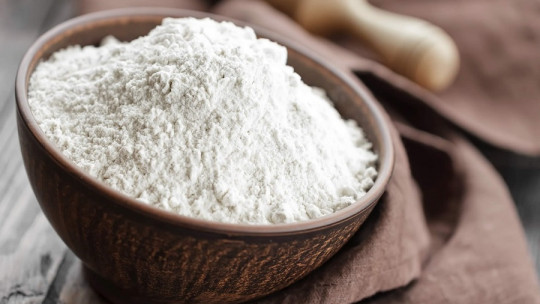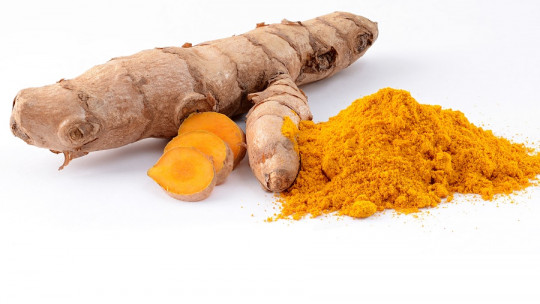Xanthan gum is an ingredient that has increased its presence in the products on the shelves of the food industry
Although it is not usual that when buying a product we carefully check the labels to read each of the ingredients that make it up, we usually check the taste and perhaps the nutritional value data, but if we take a look we can see that the xanthan gum is already present in many products.
But… What is xanthan gum? What are its uses and why has it become popular?
Xanthan gum: its uses and properties
xanthan gum It is a high molecular weight polysaccharide that is obtained by the fermentation of carbohydrates Its high solubility capacity and stability in the presence of salts and its resistance to enzymes have made this substance one of the main polymers used in the food industry.
1. Properties of xanthan gum
The molecular structural rigidity of this rubber gives it unusual properties such as heat stability, tolerance in acidic, sour and basic solutions. It has stable viscosity in wide temperature ranges and resistance to enzymatic degradation.
Solubility
It is not soluble in organic solvents. It is easily soluble at high and low temperatures. It must first be completely dissolved in water and then add the chosen solvent under continuous stirring.
Goo
Aqueous solutions of xanthan gum They are highly viscous This viscosity is not affected by temperature neither at freezing nor at boiling point. That is why it is chosen by the food industry because the properties of the final products where they are used remain stable regardless of whether they are refrigerated, at room temperature or even in hot areas.
Rheological properties
Xanthan gum or xanthan solutions are pseudo-plastic, important characteristic in the stabilization of suspensions and emulsions This pseudo-plastic property improves the sensory characteristics of the final product (mouthfeel, flavor release) and also guarantees a high degree of mixing, pumping and pouring.
All these properties make xanthan gum a highly requested ingredient in the food industry as it provides many advantages, and makes it an excellent alternative for people with celiac disease in the preparation of pastries, allowing the bread to foam, enhancing the flavor and allowing cold or hot storage.
2. Applications of this ingredient in food
The applications of xanthan gum in the food industry and in home food preparation are many and varied.
This is because thanks to their nature and properties they allow adding texture, flavor, viscosity and substitute ingredients such as some additives, preservatives or gluten that are harmful to health if taken in excess or to which some people are allergic.
Bakery
xanthan gum It is mainly used in bakery products because it helps them to fluff up better, replacing gluten in recipes but its use is just as effective in other types of foods.
Ice creams
It is efficient in making ice cream, because slows the formation of crystals when frozen so it results in a much creamier product.
Industrialized and packaged flavored beverages
For drinks that include fruit pulp, xanthan gum It is used to keep fruit pieces suspended, giving it a better appearance
Due to this ability to keep solid elements in suspension that are not soluble in liquids, xanthan gum is widely used in industrialized beverages, because it is also compatible with the rest of the ingredients.
Light low-fat products
An incredible use of xanthan gum or xanthan gum is that it is applied to low-calorie foods to replace the pleasant sensation produced by fatty foods.
This gum is added to light coconut milk to compensate for the lack of fat and this causes the sensation when drinking it to be similar to that of fatty coconut milk.
Syrups
The gum improves the fluidity and adhesion of syrups to fruits, ice cream or pancakes, so control runoff and penetration
Pharmaceutical and cosmetic applications
Xanthan gum is used as a thickener in syrups or as a stabilizer in emulsions for the pharmaceutical industry. For cosmetics it is useful because of the stability it provides to pH temperature, salts and acids, as well as changes in forces such as agitation, which is why it is widely used in makeup remover products, creams and masks.
Recommendations for home uses of Xanthan gum
The side effects are minimal. However, it could cause gas and bloating for people with very sensitive stomachs. Besides, does not contain fat or protein; It is mainly composed of dietary fiber so it can also be useful for athletes or people who want to take care of their figure.
Some recommendations for its homemade use in breads are to be careful with the quantities added, because if little is used, the bread can be brittle and hard, and if too much is used, the bread will look shrunken when taken out of the oven and will continue to reduce in size. even days later.
You must also take into account what type of liquid flours, flavors and other ingredients are added, as each one alters or enhances the properties of xanthan gum.
Xanthan gum is non-toxic and The United States FDA approved it as a food additive in 1969 without any restrictions or quantity limit.









